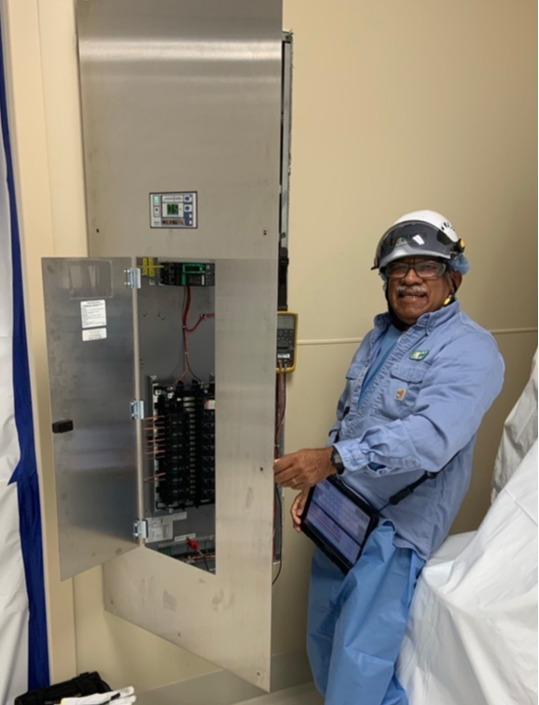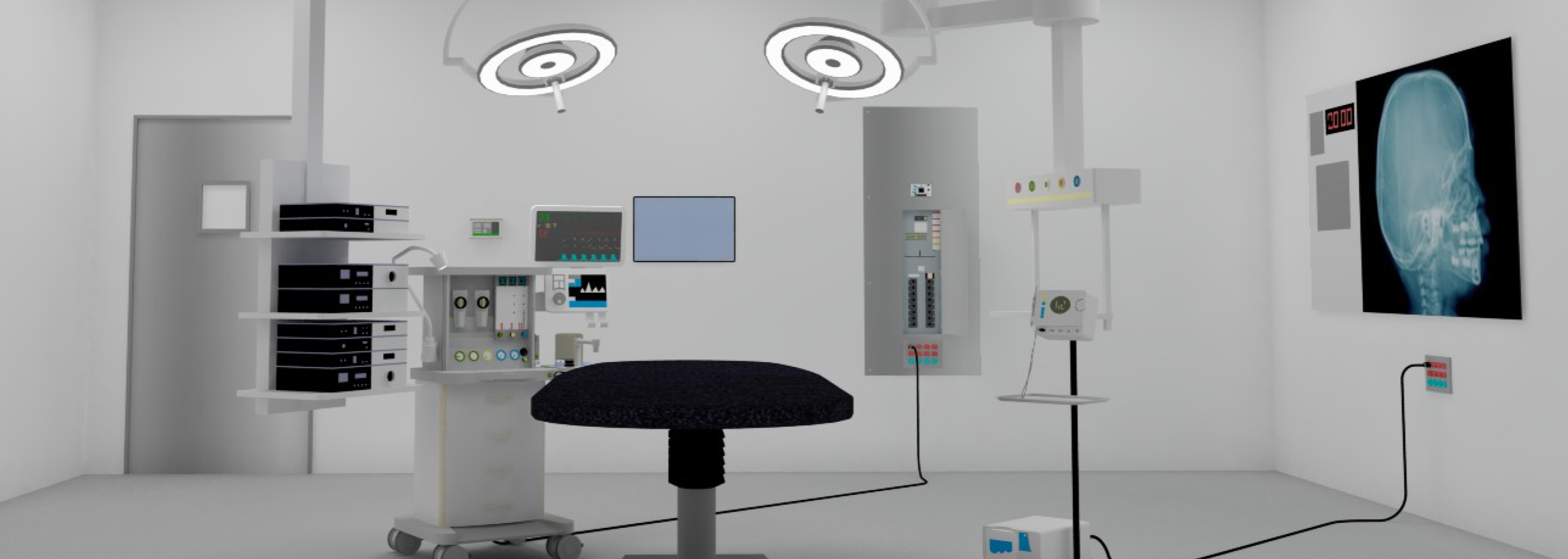Grounded or Ungrounded? Exploring the difference between grounded and ungrounded power in ORs

What are grounded and ungrounded systems?
Grounded Systems: In a grounded system, the neutral is directly connected to the ground. This means that if an insulation fault occurs, current will immediately flow through the ground, potentially causing an electrical shock with just one fault.
Ungrounded Systems: In an ungrounded system, the circuit is isolated from the ground. Current can only flow if there are two separate insulation faults, creating a voltage difference large enough to allow electricity to travel between the points.
What does this mean for operating rooms? Is one type of system preferred over the other?
Nearly anything a person can touch in an operating room is connected to the ground. So according to NFPA 99 Health Care Facilities Code an operating room is considered a “wet location”, and “wet locations” should use an “ungrounded system”. This is accomplished by using an isolation transformer. Electrical systems in operating rooms, under normal conditions, are often “ungrounded,” meaning that they are not intentionally attached to the ground. It is essential to remember that “ground” still exists throughout the operating room. The ground always exists, but in an ungrounded system, the output of an isolation transformer is not intentionally attached to the ground.
To understand the electrical hazards in an operating room, it's important to recognize that the patient on the OR table is connected to the ground, as well as the nurses and doctors. What does this mean? If there's a failure in insulation, electrical current could pass through anyone in the room, leading to electrocution. The risk and severity depend on the type of electrical safety measures in place. In "ungrounded systems," two separate faults and a significant voltage difference are needed for electricity to flow through the ground. However, in "grounded systems," only one fault is enough to cause current to flow.
How do you protect patients and hospital staff from electrical hazards?
In healthcare facilities and operating rooms, having a dependable and safe power supply is essential since key life-saving equipment relies on a steady flow of electricity. To help ensure this, many facilities use Isolated Power Systems (IPS). These systems offer several important benefits, including improved safety, protection of medical equipment and personnel, the ability for continuous care, and aiding facilities to meet regulations. IPSs play a critical role in keeping modern medical centers running smoothly and safely.
The primary advantage of an IPS is the increased safety it provides for both patients and staff. By creating electrical isolation between the power source and medical devices, it greatly reduces the risk of electrical shocks. This is especially important in high-risk areas like operating rooms, intensive care units, and neonatal wards, where devices run continuously to support life. This extra layer of protection helps create a much safer environment for patient care.
Which components are often found connected to “ungrounded systems” in operating rooms?
- Circuit Breakers in the Isolation Power Panel (IPP)
- The Line Isolation Monitor (LIM)
- Most receptacles (electrical outlets) distributed throughout the operating room
- The surgical lights
- Isolation transformer secondary winding. (Note that the transformer’s primary winding is attached to a different isolated electrical system)
- Power cords have insulated copper conductors. The purpose of the cord’s insulation is to keep the copper from touching “ground"
- When plugged into a receptacle, the instruments used by the medical team
- Suction pumps, ventilators, electrocautery tools, heart and oxygen monitors
There are many more components that make up the isolated ungrounded electrical system. In an ideal scenario, all the above components will remain insulated from the ground, including the power cords. Unfortunately, things go wrong, insulation wears off, wire connections come loose, and components on circuit boards fail, resulting in ground faults.

What can we conclude from this?
Nearly anything a person can touch in an operating room is connected to the ground. An “ungrounded system” is accomplished by using an isolation transformer. Electrical systems in operating rooms, under normal conditions, are often “ungrounded,” meaning that they are not intentionally attached to the ground. It is essential to remember that “ground” still exists throughout the operating room. The ground always exists, but in an ungrounded system, the output of an isolation transformer is not intentionally attached to the ground.
Why do engineers prefer an ungrounded electrical system over a grounded one in an operating room or ICU? Simply put, electrical current cannot flow back to the power source via “ground” in an ungrounded system. Like the cars racing around the track in Daytona, current flows in loops. If you open the loop, the electrical current can’t flow.
There’s another massive benefit to a well-monitored “ungrounded system.” There’s no need to trip (remove power) when the first fault (failure) occurs in an ungrounded system. This benefit is often referred to as continuity of power.
For more information about this application or to learn more about Bender technology related to your specific application, contact our team of experts.
This article is for informational purposes only. Bender provides the information "as is" without warranty and is not responsible for its accuracy or reliability. No warranties are given regarding its suitability for any specific circumstances.


-1.jpg?width=352&name=Blank%20300%20x%20175%20(3)-1.jpg)

